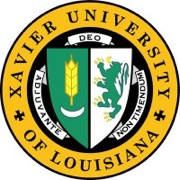Below is a summary of the abstract you submitted. Presenting author(s) is shown in bold.
If any changes need to be made, you can modify the abstract or change the authors.
You can also download a .docx version of this abstract.
If there are any problems, please email Dan at dar78@pitt.edu and he'll take care of them!
This abstract was last modified on May 10, 2016 at 12:44 p.m..

Phages were isolated from a variety of locales in and around the Greater New Orleans, Louisiana area using standard microbiological techniques. When allowed to form plaques in a soft-agar overlay culture with M. smegmatis mc<sup>2</sup>155 as host, phages displayed a variety of plaque sizes and morphologies. Titers of lysates varied from roughly 10<sup>8</sup> to 10<sup>14</sup> plaque-forming units per milliliter. One phage, LilDestine, was isolated from the vicinity of Norco, Louisiana near a large refinery, and this phage was selected for sequencing. The LilDestine genome is somewhat more than 75,000bp in length, with cohesive ends showing a ten base pair overlap. BLASTn analysis reveals considerable nucleotide homology with the genomes of other known mycobacteriophages, including Wilder, Winky, Breezona, Faith1, Crossroads, Loadrie and Nicholasp3. These homologies support assignment of LilDestine to the L cluster and specifically the L2 subcluster. DNA Master autoannotation employing Glimmer and GeneMark calls about 140 total features. Analysis with Aragorn via the World Wide Web, external to the DNAMaster environment, calls 12 tRNA-encoding genes. These tRNA calls are located in a single cluster around 62-63kbp from the left end, except for two that are a bit further down, around 65kbp. All code for standard amino acids, with no tmRNAs called. A scan employing tRNAscanSE returns results that are in substantial agreement with the Aragorn data. In the case of protein encoding genes, in those cases where there is sufficient support from BLASTp and other sources (e.g. the Conserved Domain Database [via phamerator]) we suggest a possible function.


